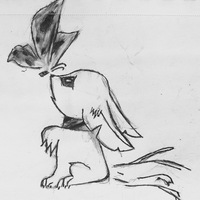
ПОМОГИТЕ ПОЖАЛУЙСТА!! Реши задачу.От города до турбазы, двигаясь в гору, велосипедист доехал за
3 часа.При возвращении его средняя скорость оказалась на 10 км/ч больше, поэтому дорога заняла у него на 1 час меньше. Вычисли, расстояние от города до турбазы. 0
0
 0
0
Ответы на вопрос
 Внимание! Ответы на вопросы дают живые люди. Они могут содержать ошибочную информацию, заблуждения, а также ответы могут быть сгенерированы нейросетями. Будьте внимательны. Если вы уверены, что ответ неверный, нажмите кнопку "Пожаловаться" под ответом.
Внимание! Ответы на вопросы дают живые люди. Они могут содержать ошибочную информацию, заблуждения, а также ответы могут быть сгенерированы нейросетями. Будьте внимательны. Если вы уверены, что ответ неверный, нажмите кнопку "Пожаловаться" под ответом.

Problem Analysis
We are given that a cyclist traveled from a city to a tourist base. On the way up, the cyclist took 3 hours to reach the base. On the return journey, the cyclist's average speed was 10 km/h higher, and the journey took 1 hour less. We need to calculate the distance from the city to the tourist base.Solution
Let's assume the distance from the city to the tourist base is d km.On the way up, the cyclist took 3 hours to cover the distance, so the average speed on the way up was d/3 km/h.
On the return journey, the cyclist's average speed was 10 km/h higher, so the average speed on the return journey was (d/3) + 10 km/h. The journey took 1 hour less, so the time taken on the return journey was 3 - 1 = 2 hours.
We can use the formula speed = distance/time to calculate the distance.
For the way up: d/3 = (d/3) km/h * 3 hours
For the return journey: d/2 = [(d/3) + 10] km/h * 2 hours
Now, we can solve these two equations to find the value of d, which represents the distance from the city to the tourist base.
Let's solve the equations step by step:
1. Multiply both sides of the equation for the way up by 3: d = (d/3) km/h * 3 hours Simplifying, we get: d = d km/h * 3 hours / 3 d = d km/h * 1 hour
2. Multiply both sides of the equation for the return journey by 2: d/2 = [(d/3) + 10] km/h * 2 hours Simplifying, we get: d/2 = (d/3 + 10) km/h * 2 hours d/2 = (2/3)d km/h + 20 km/h * 2 hours d/2 = (2/3)d km/h + 40 km
3. Multiply both sides of the equation for the return journey by 2/3 to eliminate the fraction: (2/3)(d/2) = (2/3)(2/3)d km/h + (2/3)40 km Simplifying, we get: d/3 = (4/9)d km/h + 80/3 km d/3 - (4/9)d km/h = 80/3 km (9d - 4d)/27 = 80/3 km 5d/27 = 80/3 km
4. Multiply both sides of the equation by 27/5 to solve for d: d = (80/3 km) * (27/5) Simplifying, we get: d = 144 km
Therefore, the distance from the city to the tourist base is 144 km.
Answer
The distance from the city to the tourist base is 144 km. 0
0
 0
0
Топ вопросов за вчера в категории Математика
Последние заданные вопросы в категории Математика
-
Математика
-
Литература
-
Алгебра
-
Русский язык
-
Геометрия
-
Английский язык
-
Химия
-
Физика
-
Биология
-
Другие предметы
-
История
-
Обществознание
-
Окружающий мир
-
География
-
Українська мова
-
Информатика
-
Українська література
-
Қазақ тiлi
-
Экономика
-
Музыка
-
Право
-
Беларуская мова
-
Французский язык
-
Немецкий язык
-
МХК
-
ОБЖ
-
Психология
-
Физкультура и спорт
-
Астрономия
-
Кыргыз тили
-
Оʻzbek tili





















